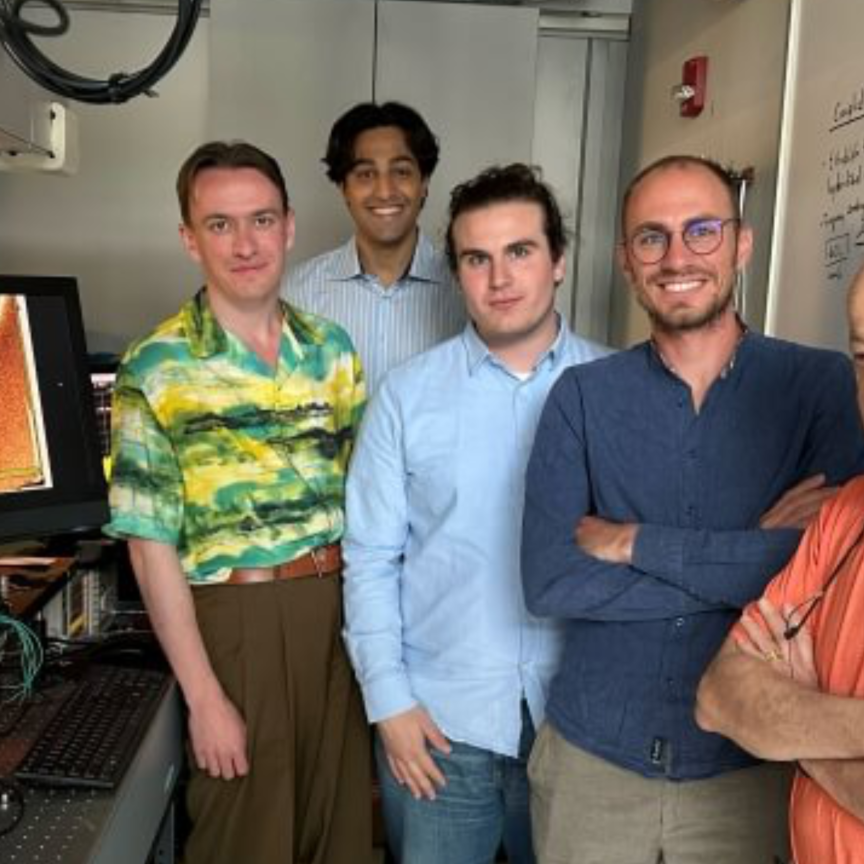A new technique for producing ultrafast laser pulses could hold promise for advancing high-energy physics and lead to discoveries in fusion research, according to researchers.
The technique, developed by a team from the Accelerator Technology & Applied Physics (ATAP) Division at Berkeley Lab, involves spectrally combining laser pulses operating at adjacent wavelength ranges to achieve an ultra-broad spectrum able to support very short pulses at tens of femtoseconds (fs).
The technique is intended for laser-plasma accelerators (LPAs), which pass laser pulses through plasma to accelerate charged particles up to a thousand times faster than current technologies, the team says.
Though LPAs are less expensive to build and operate than conventional accelerators, current models use laser pulses with repetition rates of a few Hz.

(a) Experimental setup; (b) Dichroic mirror 1 transmission spectrum; and (c) Dichroic mirror 2 transmission spectrum. (Image: Berkeley Lab)
To reach their full potential, “[LPAs] require high-power laser systems capable of generating ultrashort, high-energy laser pulses at repetition rates in the kHz range or higher,” says Siyun Chen, a Research Scientist at ATAP’s BELLA Center, who led the experimental demonstration of the new technique, adding that these constraints are highly demanding.
As a result, the team’s technique uses fibre lasers, which Chen says are the “most efficient high-power laser technology demonstrated to date and also have extensive industrial development that could be leveraged in our work.”
The researchers used a mode-locked oscillator and ytterbium-doped fibre amplifier to generate 120fs pulses at 100MHz. They broadened the spectrum from 27nm to 90nm using a photonic-crystal fibre and split the pulse using dichroic mirrors. The pulses were shaped using pulse shapers and amplified before being recombined.
Although the energy and power of pulses produced by fibre lasers can be scaled up by combining multiple pulses in space and time (temporally), the pulses are currently limited to about a hundred fs – not short enough to drive LPAs.

Measured autocorrelation traces after compression (combined pulse and pulse from each channel) and calculated autocorrelation trace of the transform-limited pulse for the combined spectrum. (Image: Berkeley Lab)
“While fibre laser systems offer the highest wall-plug efficiencies – the electrical-to-optical power efficiency – the spectrum of ultrashort laser pulses amplified in these systems narrows,” says Tong Zhou, a research scientist in ATAP’s BELLA Center who led the development of the new technique.
He adds: “This gain narrowing is a fundamental effect when laser pulses are amplified in this way; the narrower the pulse’s spectrum is, the longer its duration. Consequently, it is very challenging for high-power fibre lasers to generate pulses shorter than about a hundred femtoseconds.”
“This ultra-broadband spectral combining with synthesised pulse shaping produced pulses of only 42fs in duration, which is significantly shorter than the pulses generated from each of the three fibre channels,” says Chen. “We believe this is the shortest pulse duration ever achieved from a spectrally combined ytterbium fibre laser system.”
Zhou says: “While the work has demonstrated ultrafast pulses that are so far at low energy, it demonstrates the key principles of ultra-broadband spectral combining and coherently spectrally synthesized pulse shaping and provides a path forward for using fibre lasers to drive LPAs.”
The team plans to add more amplification stages and implement multidimensional techniques capable of spatially, temporally, and spectrally combining fibre lasers to produce high-energy, tens-of-fs laser pulses.


